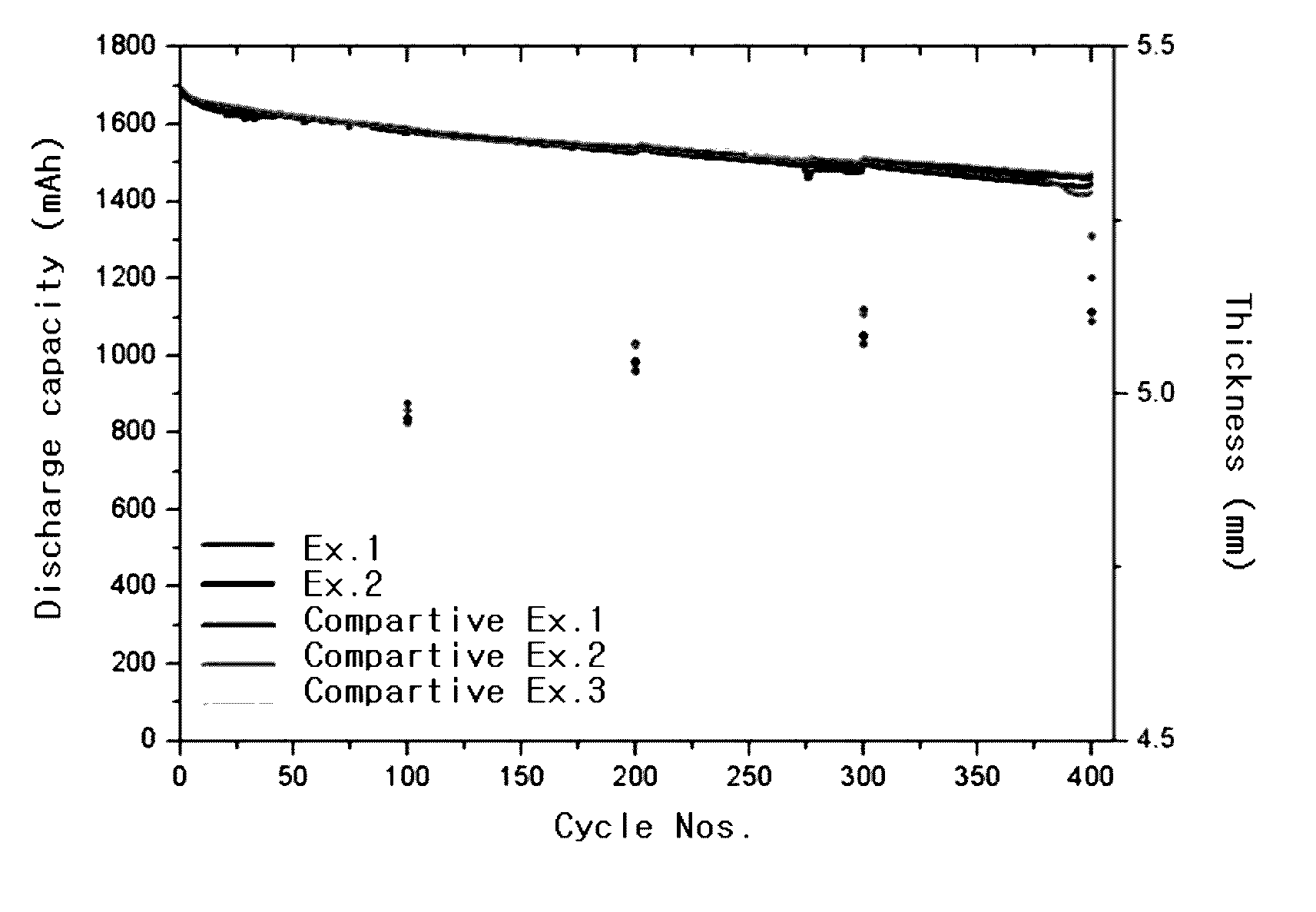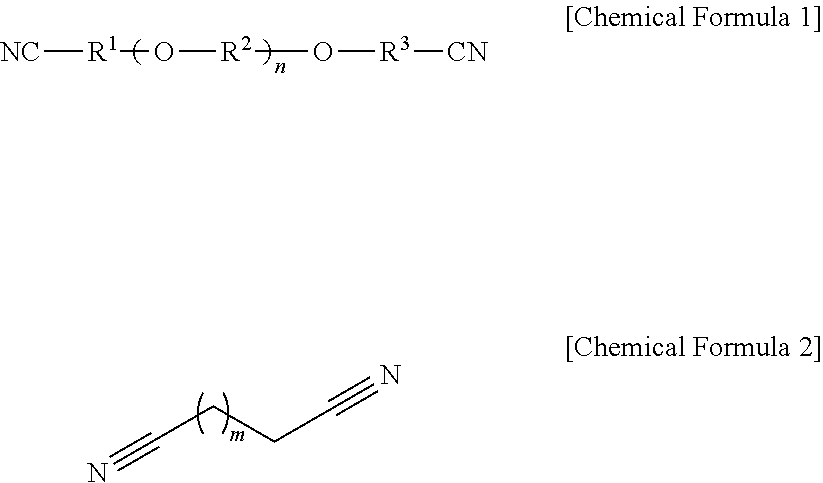Non-aqueous electrolyte solution for lithium secondary battery and lithium secondary battery including the same
a lithium secondary battery and non-aqueous electrolyte technology, which is applied in the direction of non-aqueous electrolyte cells, cell components, electrochemical generators, etc., can solve the problems of swelling phenomenon, accelerated desorption of transition metal constituting active material, and generation of electrolyte solution, etc., to achieve excellent effect on restraining swelling phenomenon of battery
- Summary
- Abstract
- Description
- Claims
- Application Information
AI Technical Summary
Benefits of technology
Problems solved by technology
Method used
Image
Examples
example 1
Preparation of Non-Aqueous Electrolyte Solution
[0056]Into a mixture solvent including an organic solvent of ethylene carbonate (EC):propylene carbonate (PC):diethyl carbonate (DEC)=3:2:5 by weight and 1.0 M of LiPF6, 2% by weight of vinylene carbonate (VC), 3% by weight of 1,3-propanesultone (PS) and 3% by weight of fluoroethylene carbonate (FEC) based on the total amount of the electrolyte solution were added. Into the mixture solution, 1.5% by weight of ethylene glycol bis(2-cyanoethyl)ether (EGPN) and 5% by weight of succinonitrile were added to prepare a non-aqueous electrolyte solution.
[Manufacture of Lithium Secondary Battery]
[0057]LiCoO2 as a cathode active material, polyvinylidene fluoride (PVdF) as a binder and carbon as a conductive material were mixed by a mixing ratio of 93:4:4 by weight. The mixture was dispersed in N-methyl-2-pyrrolidone to prepare a cathode slurry. The slurry was coated on an aluminum foil having a thickness of 15 μm, dried and rolled to manufacture a...
example 2
[0060]A non-aqueous electrolyte solution and a lithium secondary battery were manufactured by conducting the same procedure described in Example 1 except for adding 3% by weight of ethylene glycol bis(2-cyanoethyl)ether.
experiment 1
Test on Measuring Swelling on Storing at High Temperature
[0064]In order to evaluate the swelling of each battery according to Examples 1 and 2 and Comparative Examples 1 to 3 when storing at a high temperature, each of the batteries was stored in a 4.4 V over-charged state at 60° C. for 13 days. Then, the thickness change of each of the batteries was measured. The results on the swelling test were obtained as a maximum thickness change (Δt) with respect to an initial thickness for each battery and are illustrated in following Table 1.
[0065]
TABLE 1Δt (mm)Example 13.220Example 23.094Comparative Example 13.100Comparative Example 23.089Comparative Example 34.987
[0066]As known from Table 1, the thickness change of the battery using the non-aqueous electrolyte solution excluding ethylene glycol bis(2-cyanoethyl)ether according to Comparative Example 3 is found large when comparing with those of the batteries using the non-aqueous electrolyte solutions including ethylene glycol bis(2-cyano...
PUM
| Property | Measurement | Unit |
|---|---|---|
| thickness | aaaaa | aaaaa |
| thickness | aaaaa | aaaaa |
| temperature | aaaaa | aaaaa |
Abstract
Description
Claims
Application Information
 Login to View More
Login to View More - R&D
- Intellectual Property
- Life Sciences
- Materials
- Tech Scout
- Unparalleled Data Quality
- Higher Quality Content
- 60% Fewer Hallucinations
Browse by: Latest US Patents, China's latest patents, Technical Efficacy Thesaurus, Application Domain, Technology Topic, Popular Technical Reports.
© 2025 PatSnap. All rights reserved.Legal|Privacy policy|Modern Slavery Act Transparency Statement|Sitemap|About US| Contact US: help@patsnap.com



